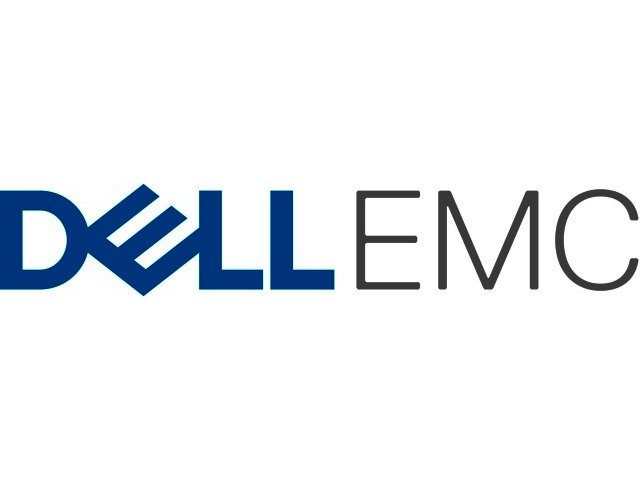Following on from Part 1 of the Flash series, in its latest podcast, Dell EMC explains why conventional disc drive storage’s days are numbers, with flash poised to send hard drives as primary storage the same way as the Betamax.
Rudi Van Rensburg, Senior Manager Primary Storage All Flash at Dell EMC, doesn’t mince words, asserting that Flash is now the only realistic choice for primary storage with the performance and bottom line benefits it brings. He elaborates that the historic concerns over cost and stability are now a thing of the past, meaning all-flash arrays are well on their way to becoming the dominant force in the primary storage space.
However, Van Rensburg stressed that the myths around flash remain, and these must be addressed if businesses are to fully embrace the technology and the benefits that it brings.
He notes that it is a little known fact that 2016 marks the 60th anniversary of the first commercial usage of hard disk storage. Hard disks have been happily spinning in data centers across the world ever since; a fantastic run by any measure, but one which is looking ever more likely to be nearing its conclusion – at least for most primary data storage use cases.
The end is just the beginning
“There’s no denying that flash media is on its way to becoming the dominant technology in primary storage. According to one report by research and advisory community Wikibon, the age of the disk-dominated data center could be over in less than a decade. “Wikibon claims that the amount of flash memory shipped as production storage will reach parity with hard-disk storage by 2020 with flash ending over 30 times greater by 2026,” he says.
Van Rensburg continues that there is strong evidence behind Wikibon’s claim. “In November 2013, EMC’s XtremIO entered the all-flash array market, claiming third place after only six weeks. Within six months, XtremIO had catapulted into the lead and is the fastest growing product in EMC’s history with a market share lead nearly three times the nearest competitor. This year, EMC shifted the focus of its entire primary storage portfolio to all-flash, including the well-regarded VMAX and recently-introduced mid-range Unity product lines.
“Flash is now the recommended default for new purchases in the primary storage space and likely for converged infrastructure systems as well. As the pace of change continues to build, it’s time to dispel any residual myths and misunderstandings once and for all,” says Van Rensburg.

Myth 1: Flash costs too much
The first myth that needs to be debunked is that Flash is too expensive. Indeed, as of 2016, the absolute cost of flash storage for primary data is slated to fall to the same level as disk for the first time.
According to Van Rensburg, when you compare the cost specifications of high performance HDDs typically used to house production data (e.g. 10 000-15 000RPM), there is now no cost advantage over flash. Indeed. the acquisition cost per gigabyte of enterprise flash storage is now extremely competitive with hard disk drives.
“In addition, businesses can achieve a significantly lower total cost of ownership (TCO) with flash, once data reduction (i.e. compression and de-duplication), reduced maintenance, simplified administration, power and cooling are taken into account.
“Take EMC’s XtremIO all-flash scale-out storage as an example. Enterprise Strategy Group (ESG) recently compared the TCO of traditional hybrid storage arrays (dedicated flash and disk-based systems) with a mixed workload storage consolidation on XtremIO for a mid-sized software development company.
“The study found that consolidating traditional storage deployments dedicated for production, development, test and VDI operations with XtremIO resulted in a 3.8x reduction in TCO over a period of five years, with average annual storage TCO savings of $561,000,” says Van Rensburg.
Myth 2: Flash wears out quickly
The second myth concerns Flash’s longevity. The wear and tear on flash media is often due to the development of hotspots, physical locations on the drive where data is repeatedly written. While it’s true that flash is a wearable media, modern system and drive capabilities manage the effects of this, minimizing the impact to the end user.
Van Rensburg says today, flash drives are constantly monitored and proactive steps taken to avoid write hotspots from developing. With these workload management improvements, reduced mechanical failure rates, and improved durability flash drives actually boast superior physical life spans over the mechanical hard disk drives they are displacing.
Myth 3: Flash performance isn’t relevant to my business
The third and final myth that needs to be dispelled is around relevance, with some businesses potentially feeling that Flash is not necessary for its requirements. Van Rensburg disputes this, explaining that with the rise of the real-time business, in which test and development and online analytics play a prominent role, overnight and batch processing is no longer sufficient. He stresses that modern, competitive organisations need to work quickly with near real-time data, making flash the only realistic choice to achieve the required levels of performance.
“Many information intensive organisations are already making extensive use of flash to extract the maximum performance from their IT investments. Flash enables the kind of data agility that is central to the operations of these businesses. And flash also has a positive impact on the bottom line. ESG’s analysis found that XtremIO would do this in a number of ways. For instance, it provides the ability to run data analytics on the same platform as the production database, shortens development time of new products, and improves overall business continuity and availability. ESG estimated that these operational agility benefits could results in annual savings of $645K. For example, many XtremIO customers leveraging the all-flash platform for integrated copy data management to reduce storage capacity requirements and accelerate productivity and workflows for in-house software test and development, analytics and data protection. XtremIO enables organizations to create instant, space-efficient copies of production databases and application data with no performance hit and or impact to storage capacity,” he explains.
“With this in mind, it should be noted that for most businesses, the best option will be a two-tiered architecture in which flash is used for production data, while secondary data – data protection, archive, backup - continues to be HDD-based,” he continues.
According to Van Rensburg the use of hard disk drives will continue to make sense for secondary data, since products for this kind of usage continue to have a considerable cost advantage over flash. But if a data centre is being used solely for production workloads requiring frequent access to active data, then all-flash is the way to go.
Flash forward
“So the path is clear for flash to take over from disk. There are no longer any financial or practical reasons for businesses to shy away from the technology, and the performance benefits it offers are now more relevant than ever. Until recently, many businesses had been asking ‘why flash?’ Facing the future, in 2016 and beyond, the more relevant and urgent question has become ‘Why NOT flash?’ The momentum is building,” concludes Van Rensburg.





